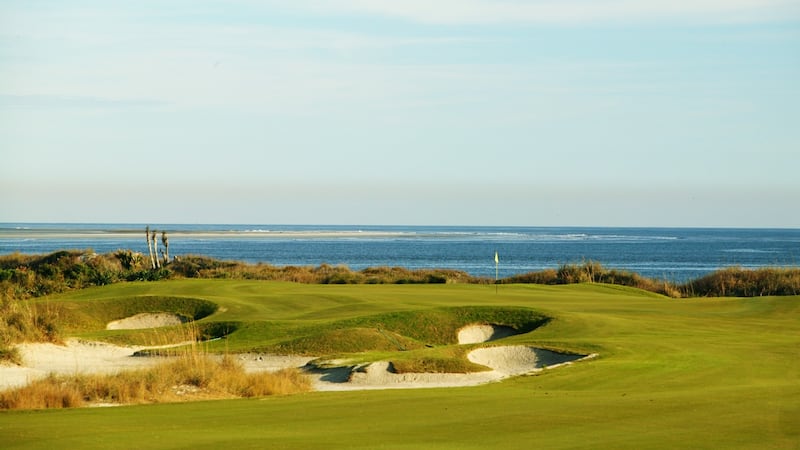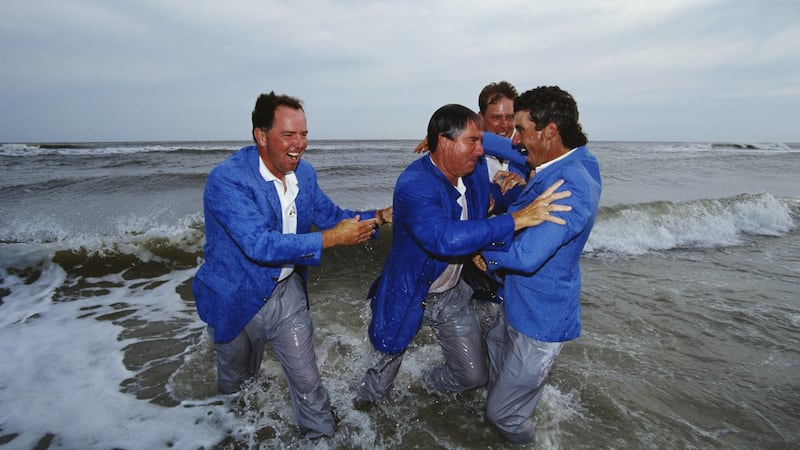Sometimes it is hard to figure out whether fact or fiction provides the more fascinating drama. In the case of the Ocean Course at Kiawah Island in South Carolina, which plays host to the US PGA Championship next week, there is evidence to suggest that fact has the edge; for, although a number of scenes for the acclaimed Bagger Vance movie were filmed on the links by the Atlantic, real life championships have produced more riveting outcomes, one with a hint of cordite in the air.
Although that 1991 Ryder Cup match, the so-called “War on the Shore,” firmly announced Kiawah Island’s arrival as a tour de force of a tournament venue, its subsequent hosting of big-time golf - two World Cups, and of course the 2012 PGA Championship - has ensured the moneyed community golfing island - whose residents include American football legend Dan Marino - has earned its place as one of the more revered stops on tour.
The Ocean Course has proven itself a fitting stage. It has also provided a green hue in its deliverance of champions, given that Pádraig Harrington and Paul McGinley teamed-up to win the 1997 World Cup (by five strokes from the Scottish team of Colin Montgomerie and Raymond Russell) while Rory McIlroy was akin to a runaway winner (by eight strokes from England’s David Lynn) in the 2012 PGA Championship.
In designing the seaside course, Pete Dye sought to find some inspiration from Irish and Scottish links. And, although it boasts no fewer than 10 holes accessing the Atlantic coastline, and so with wind invariably providing its best defence, the Dye creation is not a links by any stretch of the imagination but it is a true legacy to the master designer.
“I’m like a kid with a lollipop, this is the best piece of land I’ve worked on in the Northern Hemisphere,” Dye had observed on first setting foot on the property.
Dye, who died last year, left a legacy of courses designed by him - often with his wife, Alice - and his name is actually in the title of many courses. There’s Dye’s Walk Country Club in Indiana. The Dye Club at Barefoot Resort in Myrtle Beach. Pete Dye River Course in Virginia. The Dye Preserve in Jupiter, Florida.

Accolades
The Pete Dye Golf Club in West Virginia. In all, there were more than 130 courses with Dye’s design influences, probably the most famous of all being TPC Sawgrass in Florida, the traditional home of The Players Championship.
The accolades which came his way provided recognition of his work: he was inducted in the Golf Hall of Fame in 2008 in the Lifetime Achievement category, and awarded an honorary doctorate in Landscape Architecture by Purdue University.
And the Ocean Course at Kiawah Island ranks with the best of Dye’s work.
Dye and Alice were hired in the late ‘80s to design the course but the commission would take on a more hurried endeavour after the PGA of America - who had originally intended to play the 1991 Ryder Cup at La Quinta in the Californian desert - made the bold move to play it at Kiawah Island on the to-be Ocean Course, at the time a mere blueprint with not so much as a spade dug into sandy terrain.
“When I first walked the land, I fell in love with the site. This narrow, two-and-a-half mile beachfront had beautiful ocean views on one side and vast saltwater marshes on the other. I would have bent down on my knees and begged for the opportunity to build there,” Dye would recall.
With a tight time deadline, work on the project was not around the clock but darn close. Even Mother Nature took a pot shot when, two months into work in 1989, Hurricane Hugo flattened the beachscape and downed trees. “A wondrous mess,” is how Dye described the aftermath. When the roads were closed for weeks on end, Dye and his team took a boat to the island and his crew recreated the dunes with bulldozers and recreated the routing he’d intended.
Dye’s vision was to loop nine holes clockwise to the east along a stretch of oceanfront and to loop the back nine counter-clockwise to the west. The front nine is played through marshlands and trees, the second nine through extensive dunes (many of which were recreated by Dye’s crew’s bulldozers after Hurricane Hugo) with ocean views.
The course was ready in time for the 1991 Ryder Cup match and, while its majestic setting earned it rave reviews, that match itself brought an element of infamy, with accusations of gamesmanship and poor sportsmanship, on both sides, as the United States narrowly defeated Europe (by 14 ½ points to 13 ½) for a first success in the match since 1983.
There were allegations from Seve Ballesteros and José María Olazábal that Paul Azinger and Chip Beck had been switching balls with different compressions during a foursomes match (which was against the rules) and another by Raymond Floyd that Ballesteros had been coughing as he played shots. The war theme had been evident from the start with the match falling shortly after the Gulf War which led to a number of US players donning camouflage hats. The US won, the dynamics of the Ryder Cup changed and the Ocean Course had introduced itself as a golfing theatre with drama at its core.

Kiawah Island played host to two World Cups - won by Ireland (Harrington and McGinley in 1997) and by South Africa (Trevor Immelman and Rory Sabbatini in 2003) - before the US PGA arrived on its shores for the first time in 2012.
Ahead of that championship, Tiger Woods - an advocate of Dye’s work - described Dye’s influence on the Ocean Course: “There’s a lot of mounding, a lot of movement in his designs. A lot of it is visual. There’s a lot more room, whether it’s on the fairways or on the greens, than you think. He just makes you look the other way, he’s a masterful designer in that way . . . he makes you think, which I like, instead of just going out there and hitting a golf ball. He makes you make decisions off the tee, he makes you make decisions into the greens and makes you leave a ball in the right place. If you miss your spots, you get penalised severely.”
McIlroy, a runaway winner in 2012, described the course: “I think most Pete Dye courses, anyway, are mental challenges more than physical. Even though (the Ocean Course) is a very long golf course, mentally you’ve really got to be on the top of your game.”
Longer course
This second visit of the PGA Championship will present a longer course than nine years ago, with an extra 200 in yardage stretching it out to 7,876 yards, making it the longest in Major championship history.
Collin Morikawa, who won the Wanamaker Trophy at Harding Park in San Francisco last August, made a first visit to Kiawah Island earlier this year.
“I think it’s definitely a ball striker’s course. You have to be able to control your ball, to be able to flight different shots, work it left to right, right to left,” he remarked, then identifying the wind as a significant factor. “You really can’t get lazy on any shots, you can’t take anything for granted because it’ll bite you in the butt for sure!” said Morikawa.
Which, you feel, is just how Dr Dye would have wanted it.
EYE ON THE WEATHER
There are no thunderstorms forecast during the four tournament days, although there is a 30 per cent chance of rain showers for Thursday’s opening round. Temperatures are set to be around 26 degrees Celsius for all four rounds, with winds - a constant east, south east direction - of around 13 miles per hour.




















